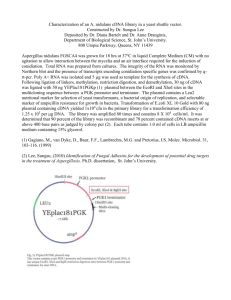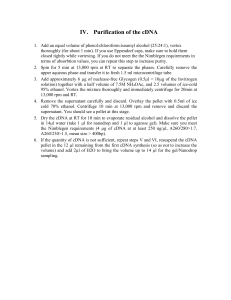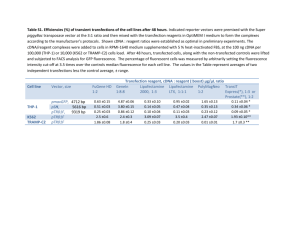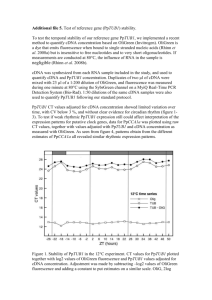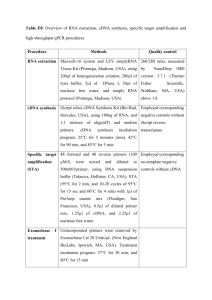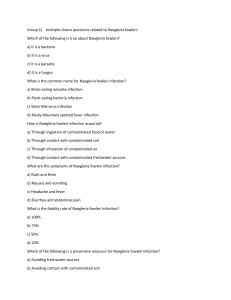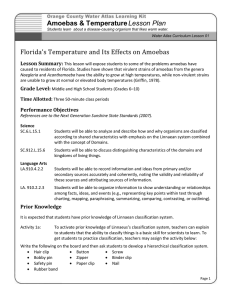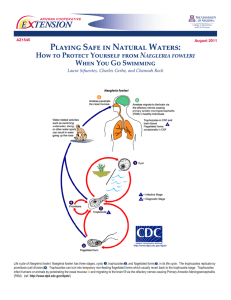Identification of Positive Coding Sequences for Proteins Essential to
advertisement
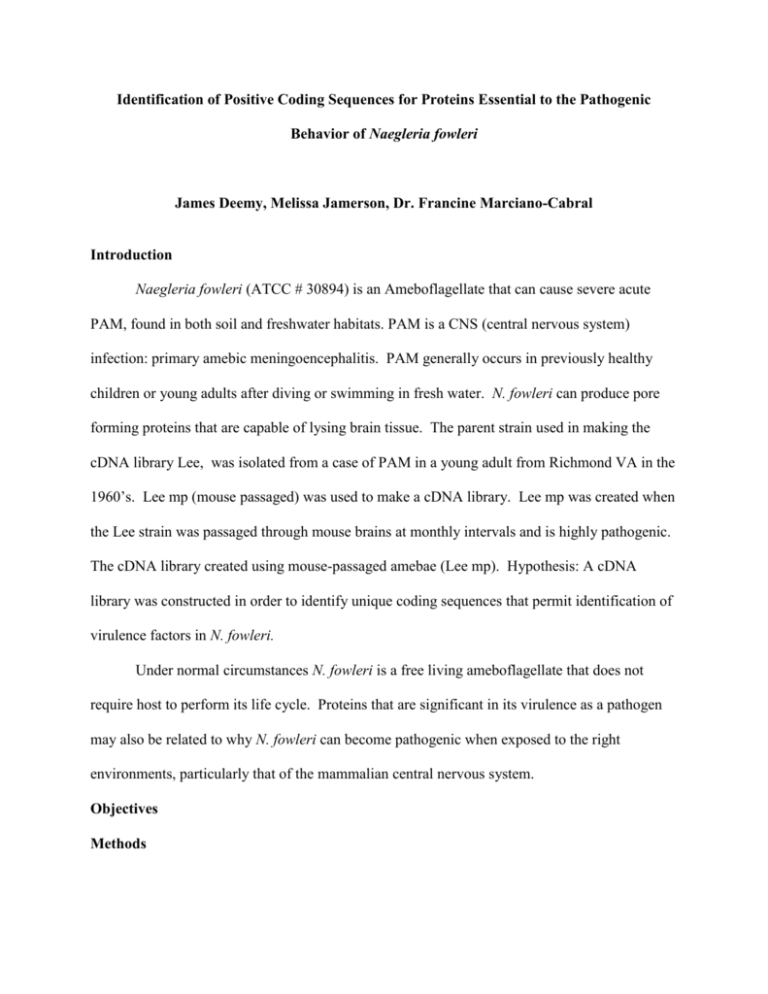
Identification of Positive Coding Sequences for Proteins Essential to the Pathogenic Behavior of Naegleria fowleri James Deemy, Melissa Jamerson, Dr. Francine Marciano-Cabral Introduction Naegleria fowleri (ATCC # 30894) is an Ameboflagellate that can cause severe acute PAM, found in both soil and freshwater habitats. PAM is a CNS (central nervous system) infection: primary amebic meningoencephalitis. PAM generally occurs in previously healthy children or young adults after diving or swimming in fresh water. N. fowleri can produce pore forming proteins that are capable of lysing brain tissue. The parent strain used in making the cDNA library Lee, was isolated from a case of PAM in a young adult from Richmond VA in the 1960’s. Lee mp (mouse passaged) was used to make a cDNA library. Lee mp was created when the Lee strain was passaged through mouse brains at monthly intervals and is highly pathogenic. The cDNA library created using mouse-passaged amebae (Lee mp). Hypothesis: A cDNA library was constructed in order to identify unique coding sequences that permit identification of virulence factors in N. fowleri. Under normal circumstances N. fowleri is a free living ameboflagellate that does not require host to perform its life cycle. Proteins that are significant in its virulence as a pathogen may also be related to why N. fowleri can become pathogenic when exposed to the right environments, particularly that of the mammalian central nervous system. Objectives Methods The cDNA library was used because it is inducible and virulent proteins were being expressed at time of synthesis. RNA isolated from pure culture of amebae and cDNA was created through reverse transcription. Using cDNA a plasmid was created and then taken up by bacteria. The cDNA was then sequenced. A BLAST sequence search was used to see what it is and if any documentation exists on that particular coding sequence. In order to test for positive protein coding immunoscreening was used. The library was grown up on LB/Amp plates. The dilution used for the plates was 1:1,000,000. Blue white screening was used to check for plasmid uptake. White bateriaal colonies were positive for having cDNA insert, blue was negative and had no insert. IPTG isopropyl thiol β-D-galactoside was used to induce the bacteria containing cDNA plasmids to make a protein in order identify that a protein is being made by the white colony. Antibodies to Naegleria were used to immunoscreen. The antibody reacted with a Naegleria protein causing the colony to turn purple (antigen antibody reaction) Molecular weight of the protein, was discovered using Western Blot techniques, from colonies that had proteins. Bacteria containing the plasmid (a white colony) were grown in two separate flasks, One flask was left as a control and IPTG was not included the other contained IPTG to induce production of the protein. Significance and potential ramifications Proteins significant to pathogenicity are potential drug targets for treating PAM. Any proteins that are significant to pathogenic virulence may also be significant to why N. fowleri can become pathogenic under the appropriate conditions. Sources •http://www.dpd.cdc.gpv/dpdx


